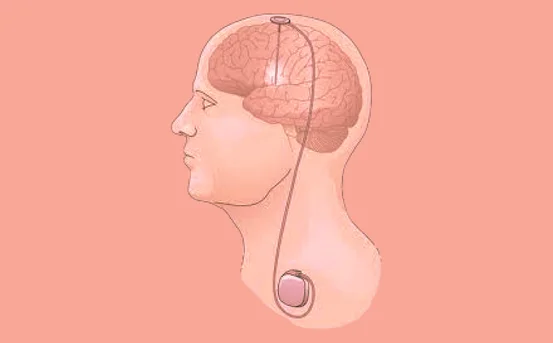Hydrocele is a common condition where fluid accumulates in the scrotum, causing swelling around the testicle. While often painless, a large or persistent hydrocele can lead to discomfort, embarrassment, or complications. Fortunately, hydrocele is treatable, and when it doesn’t resolve on its own, surgery is often recommended.
In many cases, especially in infants, hydroceles are congenital and may resolve on their own within the first one to two years of life. These are typically caused by the incomplete closure of the processus vaginalis, a small channel that normally seals off after birth. In adults, hydroceles are often acquired and may result from injury, infection (such as epididymitis), inflammation, or previous surgery in the Scrotum.
What Is a Hydrocele?
A hydrocele occurs when fluid collects in the sac (tunica vaginalis) surrounding the testicle. It is most commonly seen in newborns (congenital hydrocele) but can also develop in adults due to injury, infection, or inflammation (acquired hydrocele).
Most hydroceles are benign and may resolve on their own, especially in infants. However, if the swelling is large, causes pain, or persists beyond a certain age or timeframe, surgical intervention is advised.
There are various types of hydrocele surgery available to treat this condition effectively. Understanding the different types of hydrocele surgery is essential for choosing the appropriate treatment option.
When Is Surgery Needed for Hydrocele?
Surgery is usually considered in the following situations:
- Persistent hydrocele in infants beyond 1–2 years
- Adult hydrocele that does not resolve over time
- Large hydroceles causing discomfort or pressure
- Pain, heaviness, or walking difficulties
- Suspicion of underlying causes such as hernia or infection
- Cosmetic concerns
Types of Hydrocele Surgery
There are three main types of hydrocele surgeries, and the selection depends on the type of hydrocele, patient age, and underlying condition.
1. Open Hydrocelectomy (Excision Surgery)
This is the most common and traditional form of hydrocele surgery, especially for adult patients.
Procedure:-
- Performed under local, regional, or general anesthesia.
- A small incision is made in the scrotum or lower abdomen.
- The hydrocele sac is opened, and fluid is drained.
- The sac may be removed or everted (turned inside out and stitched) to prevent recurrence.
- The incision is closed with sutures, and a dressing is applied.
Benefits:-
- Effective with a low recurrence rate.
- Suitable for both simple and large hydroceles.
- Can be performed on an outpatient basis.
Recovery:-
- Recovery time is about 1 to 2 weeks.
- Patients may experience mild swelling or discomfort.
- Pain is usually manageable with over-the-counter medication.
2. Lord’s Procedure (Minimal Dissection Hydrocelectomy)
Named after the British surgeon Lord, this technique is less invasive and involves less dissection of tissues.
Procedure:-
- A smaller incision is made in the scrotum.
- The hydrocele sac is not removed but plicate (folded and stitched) after draining the fluid.
- Less trauma to surrounding tissue compared to open hydrocelectomy.
Benefits:-
- Less bleeding and postoperative swelling.
- Shorter operative time.
- Reduced risk of complications like hematoma or infection.
Best For:-
- Small to moderate-sized hydroceles.
- Patients with bleeding disorders or at higher surgical risk.
Recovery:-
- Quicker recovery compared to excision hydrocelectomy.
- Patients can often resume normal activities within a week.
3. Needle Aspiration with Sclerotherapy
This is a non-surgical and less invasive treatment, typically used for patients who are not fit for surgery or wish to avoid it.
Procedure:-
- A fine needle is inserted into the hydrocele sac under local anesthesia.
- Fluid is aspirated.
- A sclerosing agent (like phenol or tetracycline) is injected to close the sac and prevent fluid buildup.
Benefits:-
- Quick and minimally invasive.
- Performed in an outpatient clinic setting.
- No incisions or stitches required.
Limitations:-
- Higher recurrence rate compared to surgical methods.
- Risk of infection, inflammation, or discomfort post-procedure.
- May require repeated sessions.
Best For:-
- Elderly patients or those with significant comorbidities.
- Mild hydroceles without underlying causes like hernia.
Risks and Complications of Hydrocele Surgery
Though hydrocele surgery is generally safe, like any procedure, it carries some risks:
- Infection at the surgical site
- Bleeding or hematoma (blood collection)
- Scrotal swelling or bruising
- Recurrence of hydrocele
- Injury to nearby structures such as testicles or spermatic cord
- Reaction to anesthesia
Choosing an experienced surgeon and following post-operative instructions reduces the risk of complications.
What to Expect During Recovery
Post-operative recovery varies slightly depending on the procedure, but common guidelines include:
- Rest :- Take it easy for a few days after the procedure.
- Support :- Wear a scrotal support or tight underwear to reduce swelling.
- Hygiene :- Keep the surgical site clean and dry.
- Pain Management :- Use prescribed or over-the-counter painkillers.
- Activity :- Avoid strenuous activities, heavy lifting, or sexual activity for 1–2 weeks.
- Follow-up :- Attend all post-op checkups to monitor healing and rule out complications.
Conclusion
The right type of hydrocele surgery depends on multiple factors: the size and type of hydrocele, patient age, overall health, and personal preferences. Open hydrocelectomy is the most widely used and has a very low recurrence rate, making it ideal for most adult patients. Lord’s procedure offers quicker recovery with minimal invasiveness, while aspiration and sclerotherapy serve as an alternative for non-surgical candidates.
Among the available options, open hydrocelectomy remains the most commonly recommended surgical treatment, especially for adult patients with large or chronic hydroceles. This method allows complete removal or eversion of the hydrocele sac, significantly reducing the chances of recurrence. It is highly effective and often considered the gold standard in hydrocele management, particularly when long-term results are a priority.























